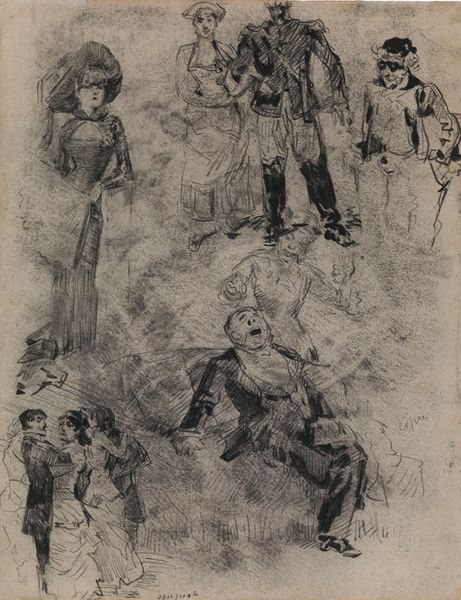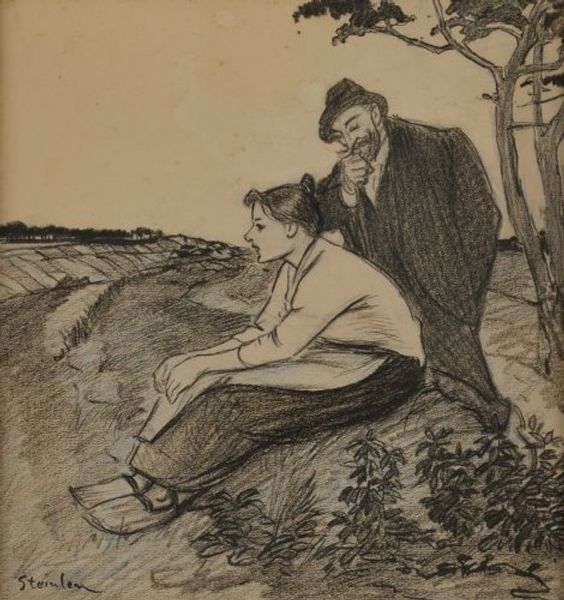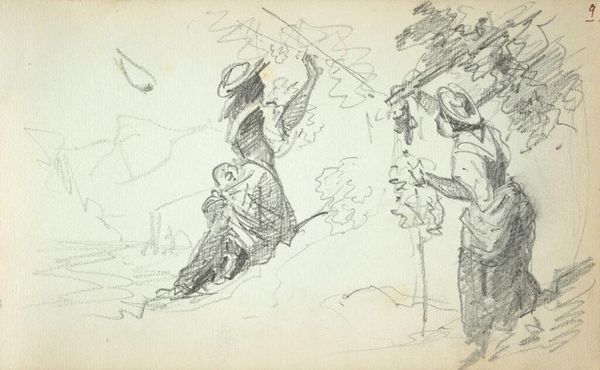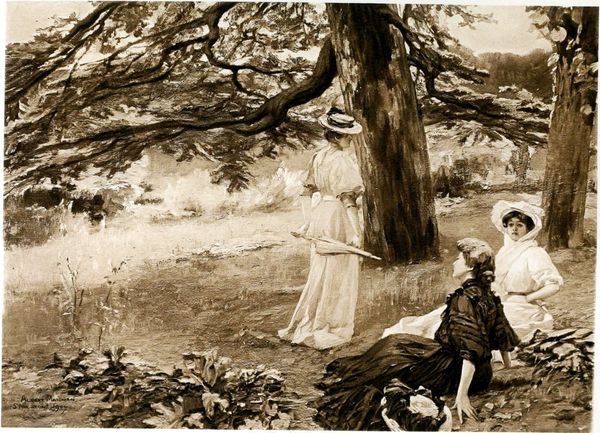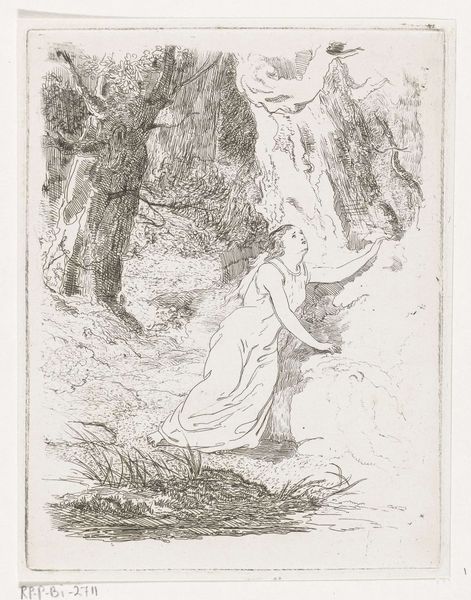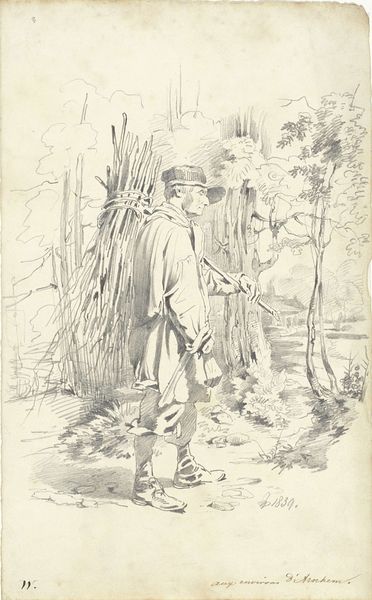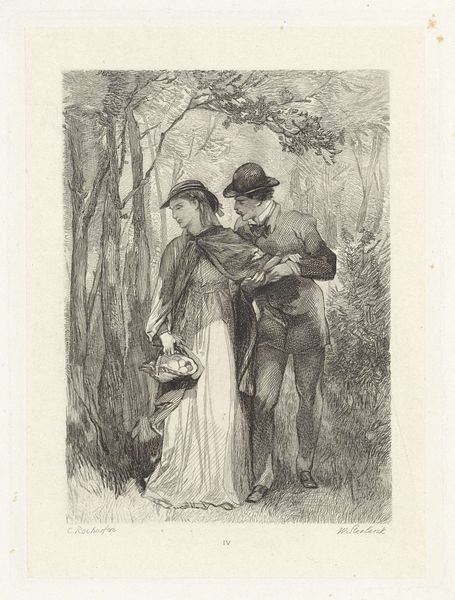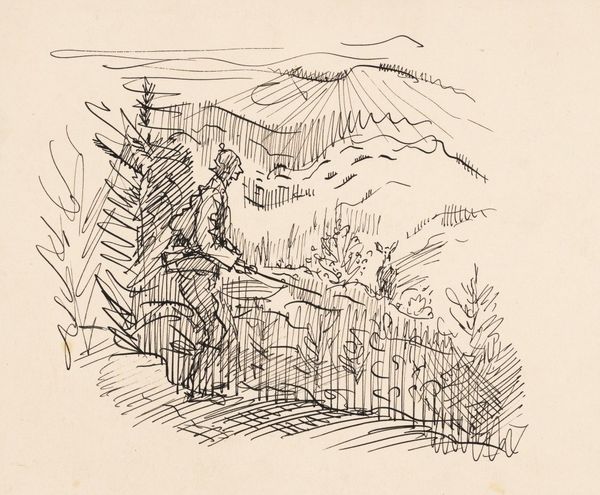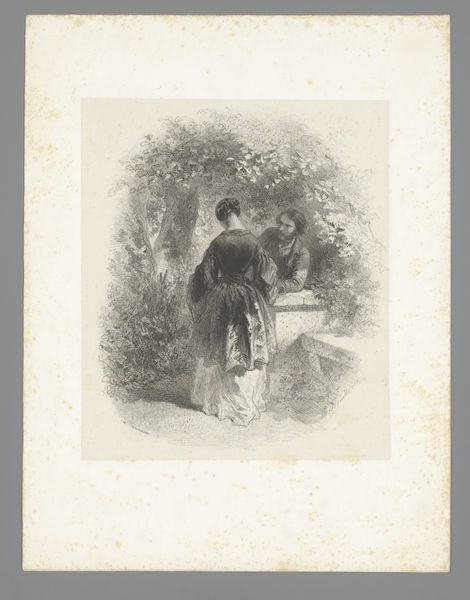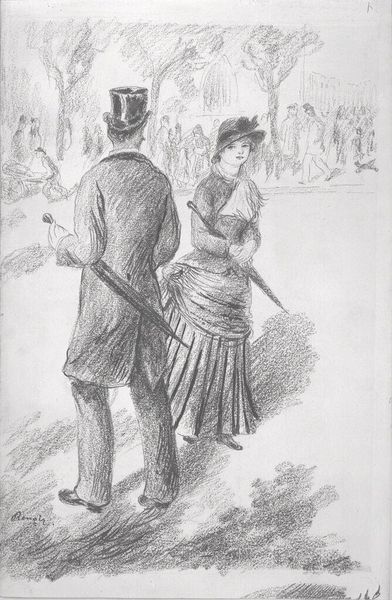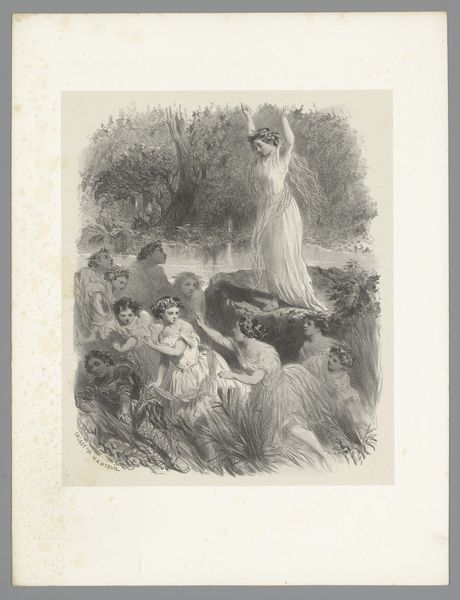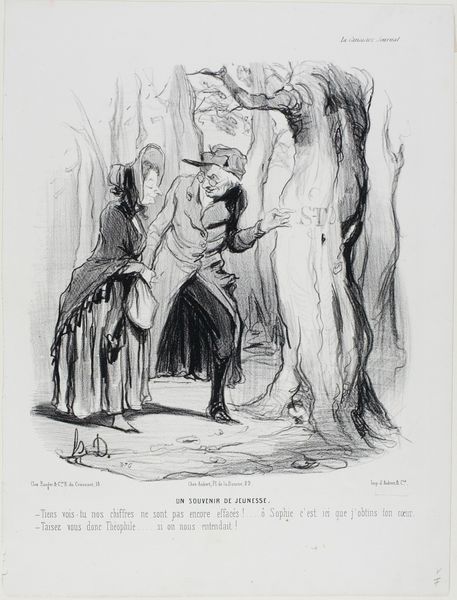
#
amateur sketch
#
pencil sketch
#
charcoal drawing
#
possibly oil pastel
#
oil painting
#
fluid art
#
acrylic on canvas
#
underpainting
#
watercolour illustration
#
watercolor
Copyright: Public Domain: Artvee
Curator: This piece is entitled "Boy and Girl," attributed to Harrison Fisher and dated 1908. It appears to be charcoal and wash on paper, though perhaps it flirts with pastel, too. The figures have a certain looseness and ease of execution that I find refreshing. What is your impression? Editor: My initial sense is of hushed anticipation. The muted colors and almost unfinished quality lend an air of secrecy, like a stolen moment. The tree acts as a symbolic barrier and a place for confessions of affection or… perhaps setting the rules for how childhood should unfold, or rather stay at bay from the perils of adulthood? Curator: Yes, the tree! So central, acting almost as a silent witness, doesn’t it? Trees are such potent symbols of rootedness and growth. I see something very American here, a nostalgic look back at a perhaps idealized moment of childhood innocence within a particular social strata. Fisher’s work certainly found popularity among those keen to reproduce an image of themselves through material objects, paintings, photographs, garments, interiors. Editor: I agree. I find it interesting how Fisher has rendered the girl's gaze averted, almost shy, yet self-possessed. There's a subtle psychological interplay at work. Do you think there is a nod to classical tropes? Fisher gained popularity because he produced an aura, an affect, which had historical grounds… he was repeating but doing something novel too, wouldn’t you say? Curator: Definitely. There are echoes of Renaissance compositions, perhaps a hint of Botticelli in the girl’s features. And his figures occupy this space of performative Americana, drawing on ideals around childhood and innocence but packaged for a burgeoning consumer culture. But this era marks also anxieties around immigration and social mobility. The artist offered audiences aspirational yet legible icons through accessible media outlets. Editor: Seeing Fisher navigate such a complex tapestry of history, commercial viability, and individual narratives helps reveal so much about America’s negotiation of childhood and memory at the start of the twentieth century. These are images we think we know and understand but carry powerful and very coded historical arguments that go beyond the canvas. Curator: A really illuminating viewpoint. And perhaps this dialogue opens our eyes to fresh interpretive pathways, too!
Comments
No comments
Be the first to comment and join the conversation on the ultimate creative platform.

